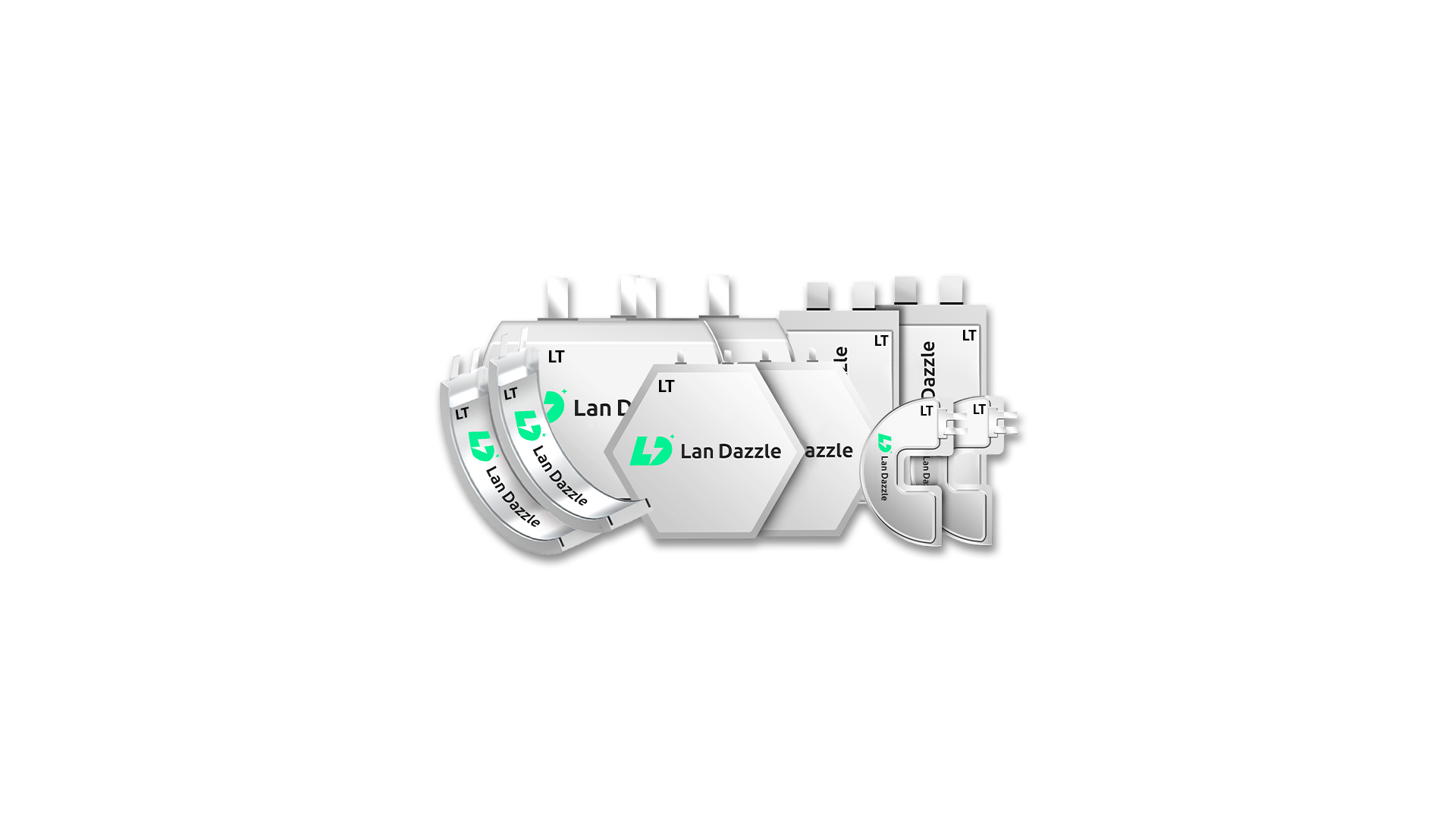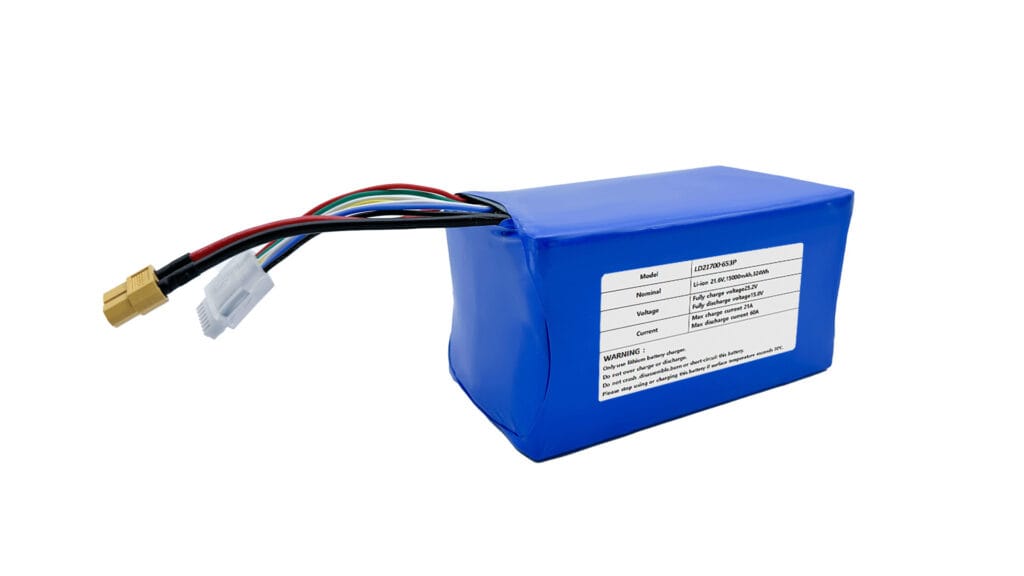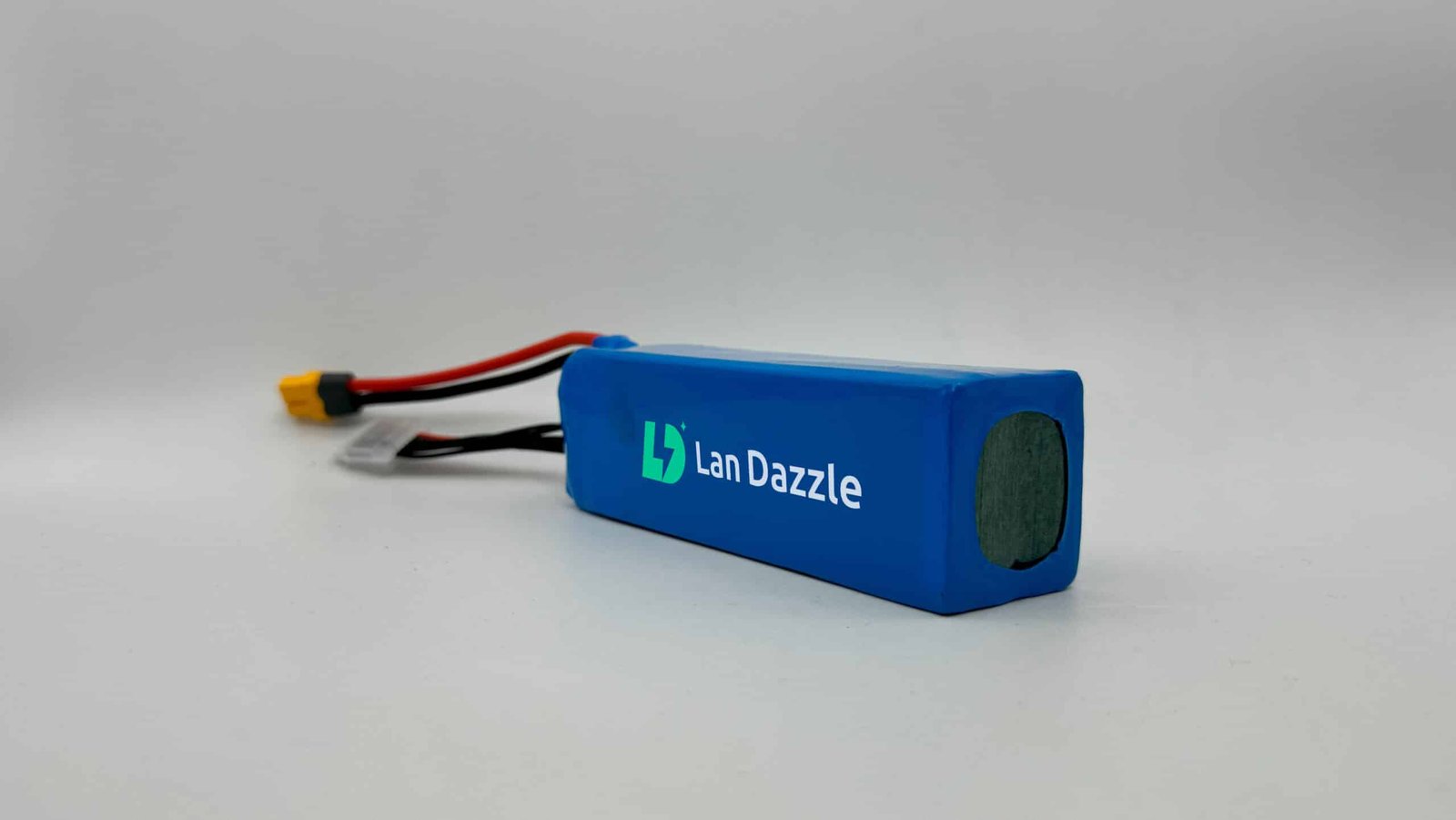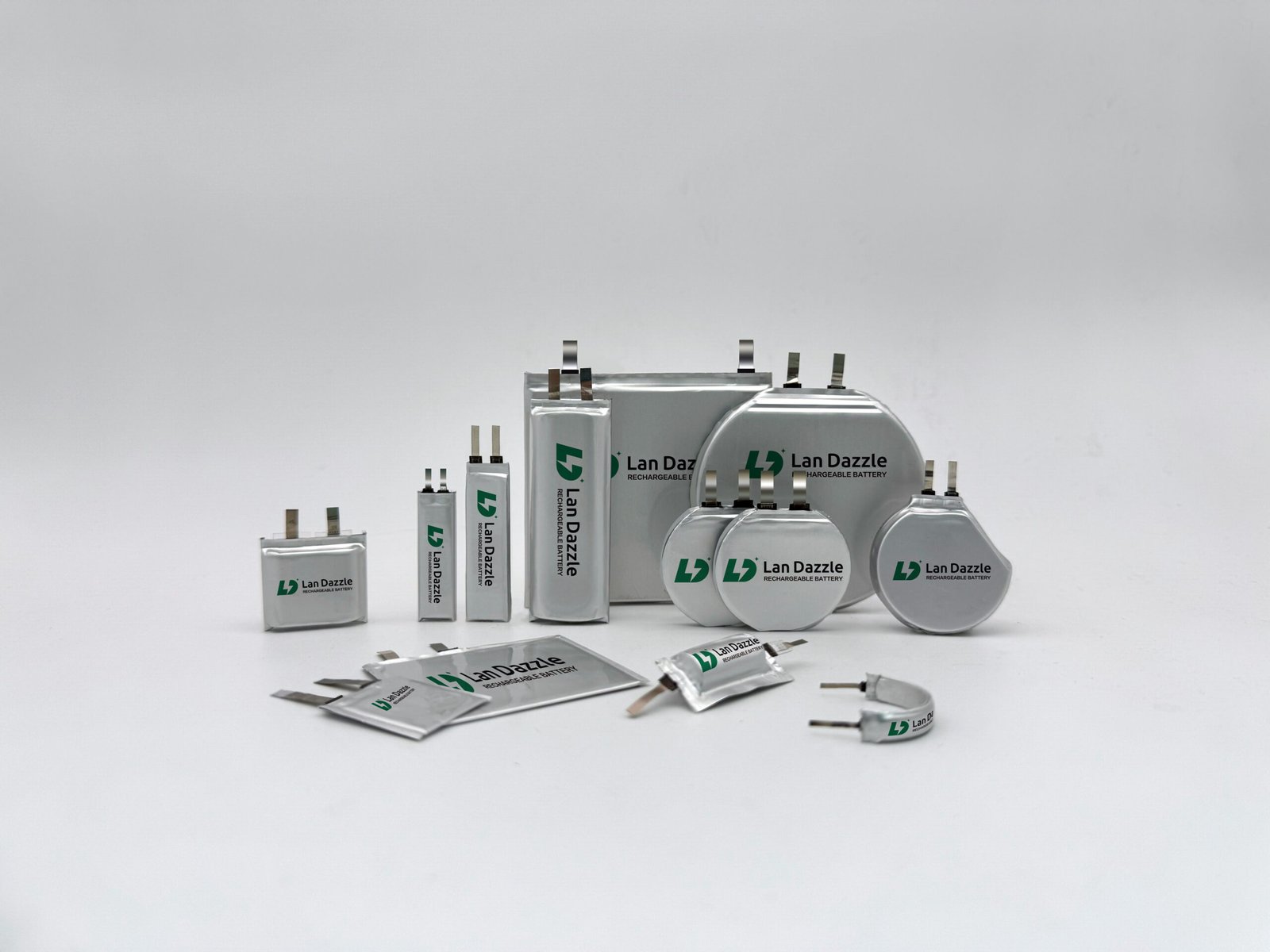Introdução
In the intricate world of medical technology, few innovations have had as profound an impact as the implantable pacemaker. These tiny, life-saving devices silently regulate cardiac rhythms, offering millions worldwide a chance at a longer, healthier life. But what powers these critical devices, ensuring their continuous, unwavering performance deep within the human body? The answer lies in highly specialized, soluções personalizadas de baterias, specifically Lithium Polymer (Li-Po) batteries, engineered to meet the extraordinary demands of implantable medical applications.
Unlike consumer electronics, pacemakers demand power sources that are not just reliable but also minuscule, exceptionally long-lasting, and absolutely safe. This article delves into why off-the-shelf batteries simply won’t suffice for such vital equipment. We’ll explore the unique advantages of soluções personalizadas de baterias for implantable pacemakers, examine the complex engineering challenges involved in their development, and discuss the rigorous regulatory landscape that ensures their safety and efficacy. For medical device engineers, understanding these nuances is crucial for designing the cardiac innovations of tomorrow.
The Unique Power Demands of Implantable Pacemakers
Powering a device that maintains a human heartbeat for over a decade within a dynamic biological environment presents unparalleled challenges. The design of implantable pacemaker batteries isn’t just about providing energy; it’s about life itself.
Continuous Operation: The Non-Negotiable Need for Uninterrupted Power
Pacemakers operate 24 hours a day, 7 days a week, often for 10-15 years without interruption. There’s no “off” switch or convenient charging port once implanted. This continuous operation necessitates a battery solution with exceptional long-term stability and predictable performance characteristics. Any power fluctuation or unexpected depletion could have catastrophic consequences for the patient.
Miniaturization Imperative: How Size Constraints Dictate Battery Design
Modern pacemakers are incredibly small, often less than 10 cubic centimeters (roughly the size of a teabag), to minimize invasiveness and improve patient comfort. This drive for miniaturização directly translates to the bateria. It must pack maximum energy into an unbelievably compact, often custom-shaped, volume. Engineers face the relentless challenge of reducing battery footprint while simultaneously increasing its capacity and lifespan.
Longevity as a Priority: Extending Device Lifespan
The average lifespan of a traditional pacemaker battery is around 7-10 years. While impressive, each battery depletion necessitates a costly and invasive replacement surgery, carrying risks of infection and complications. The goal for custom pacemaker batteries is to push this boundary, aiming for 15 years or more, thereby significantly improving patient quality of life and reducing healthcare burdens. This extended longevity is a primary driver behind advancements in densidade de energia e power management for implantable medical device batteries.
Biocompatibility and Safety: Operating Within the Human Body
A bateria de marcapasso isn’t just an electrical component; it’s a biological implant. Every material used, from the battery cell itself to its packaging and sealing, must be rigorously biocompatible to prevent adverse reactions with body tissues. Furthermore, internal temperatures in the human body are stable, but a battery must remain inert and stable under these conditions for years. Preventing events like swelling, leakage, or, critically, fuga térmica, is paramount. Hermetic sealing and inert materials are essential to contain the battery’s chemistry and protect the patient.
Power Consumption Profiles: Varying Needs
While constant, a pacemaker’s power consumption isn’t entirely static. It varies depending on pacing modes, the need for diagnostic data transmission (telemetry), and advanced features like remote monitoring or physiological sensors. A solução de bateria personalizada must be capable of delivering stable voltage under these dynamic loads while efficiently managing its charge to maximize overall device life.
Custom Battery Solutions for Implantable Pacemakers
Given the rigorous demands, why are Lithium Polymer (Li-Po) batteries emerging as a preferred choice for implantable medical devices? Their inherent characteristics, combined with the flexibility of custom design, make them exceptionally well-suited.
Advantages of Li-Po Chemistry for Implants
- Alta densidade de energia: Li-Po batteries boast a significantly higher energy density compared to older chemistries like Lithium-Iodine (traditionally used in pacemakers). This means more power can be stored in a smaller, lighter package—a critical advantage for miniaturized implantable medical devices.
- Formatos flexíveis: Unlike rigid cylindrical or prismatic cells, Li-Po cells can be designed in incredibly thin, flexible, and custom shapes. This allows medical device engineers unparalleled freedom to integrate the battery seamlessly into the device’s unique geometry, optimizing space and improving ergonomics for implantation. This flexibility is crucial for advanced designs, including leadless pacemakers.
- Baixa descarga automática: Li-Po batteries exhibit a very low rate of self-discharge, meaning they retain their charge over extended periods. This is vital for devices intended to last a decade or more, reducing the power loss over the lifetime of the device.
- Stable Voltage Output: Maintaining a consistent voltage is crucial for the precise functioning of pacemaker electronics. Li-Po cells provide a relatively stable discharge voltage profile, ensuring reliable power delivery throughout their operational life.
- Recursos de segurança aprimorados: While lithium-ion chemistries can be prone to thermal events in consumer applications, medical-grade Li-Po batteries are designed with stringent safety protocols. This includes robust internal protection mechanisms, advanced separators, and careful selection of electrolyte materials, all aimed at preventing internal short circuits and thermal runaway within the highly regulated medical environment.
The Custom Design Process
The “custom” in custom Li-Po solutions is not just a buzzword; it’s a fundamental necessity.
- Collaboration with Device Manufacturers: The process begins with close collaboration between the battery manufacturer and the medical device company. Battery engineers work hand-in-hand with device designers to understand the exact power profile, size constraints, temperature ranges, and longevity requirements specific to the pacemaker.
- Cell Selection and Configuration: Based on these requirements, optimal LiPo cell chemistries and sizes are selected. Cells are then configured in series or parallel to achieve the precise voltage and capacity needed for the device.
- Packaging and Encapsulation: É aqui que biocompatibility e vedação hermética come into play. Medical-grade materials, often specialized polymers or titanium enclosures, are used for the outer packaging. Advanced sealing techniques, such as soldagem a laser for metallic enclosures, ensure that the battery’s sensitive internal components are completely isolated from the biological environment.
- Integrated BMS (Battery Management System): A sophisticated Battery Management System (BMS) is often integrated directly into the battery pack. This tiny electronic circuit monitors cell voltage, current, and temperature, protecting against overcharge, over-discharge, over-current, and short circuits—all critical for long-term safety and reliability in an implantable device.
- Prototyping and Iteration: The design process involves multiple rounds of prototyping and rigorous testing. This iterative approach allows for optimization and validation at every stage, ensuring the final battery meets all performance and safety specifications.
Comparison with Other Chemistries
While Li-Po is gaining traction, Lithium-Iodine batteries have historically been the gold standard for pacemakers due to their exceptional track record of safety and reliability over decades. However, their lower energy density and less flexible form factors are becoming limiting factors for increasingly miniaturized, feature-rich devices. Baterias de estado sólido represent a promising future, offering potentially even higher safety and energy density, but they are not yet mature for widespread mass production in implantable medical devices. Li-Po strikes an excellent balance between performance, flexibility, and mature manufacturing processes.
Overcoming Engineering Challenges in Custom LiPo Battery Development
Developing custom Li-Po batteries for pacemakers is an exercise in overcoming complex engineering hurdles, demanding innovative solutions and meticulous attention to detail.
Miniaturization Without Compromise
The push for smaller devices requires batteries that are not just compact but also incredibly thin. This often involves developing thin-film battery technology or optimizing stacking processes to achieve a high power-to-volume ratio. Engineers must ensure that reducing size doesn’t compromise densidade de energia, safety features, or overall longevidade. Innovations in micro-battery integration are key for leadless and ultra-small devices.
Ensuring Long-Term Reliability and Safety
Medical device engineers must mitigate risks associated with lithium battery chemistry in the human body. This includes careful selection of materiais biocompatíveis that won’t degrade or react over a decade. Preventing battery swelling or electrolyte leakage is crucial, requiring robust hermetic sealing and advanced internal design to manage gas generation. Redundant safety mechanisms within the BMS and cell design act as critical safeguards against internal faults or external stresses.
Power Management and Efficiency
Optimizing the battery’s discharge curve to deliver consistent power throughout its life is paramount. Minimizing quiescent current—the small amount of power the battery drains even when the device is “idle”—is critical for extending the operational lifespan. Future advancements might even integrate minor coleta de energia capabilities, such as from body movement or temperature differentials, to supplement power and further extend battery life.
Sterilization Compatibility
Medical devices, including their power sources, must undergo rigorous sterilization processes (e.g., gamma irradiation, ethylene oxide (ETO), or autoclaving) before implantation. These processes expose components to extreme conditions that can degrade conventional battery materials or affect performance. Custom LiPo batteries must be designed with materials and structures that can withstand these sterilization cycles without compromising their integrity or long-term reliability.
Supply Chain & Manufacturing Scalability
Developing a custom medical battery involves specialized components and tightly controlled manufacturing processes. Ensuring a reliable supply chain for medical-grade materials and establishing cleanroom manufacturing processes are essential for quality and scalability. For novel designs, the ability to support both small-batch prototyping and high-volume production is crucial for successful market adoption.
Regulatory Compliance and Testing for Medical Device Batteries
For any implantable medical device, stringent regulatory compliance is not merely a formality; it is the cornerstone of patient safety and trust. Custom battery solutions are no exception, undergoing some of the most rigorous testing in the industry.
Navigating the Regulatory Landscape
Different global regions have distinct regulatory bodies and requirements. In the USA, the FDA (Food and Drug Administration) sets stringent guidelines for Premarket Approval (PMA) for Class III devices like pacemakers. In the European Union, devices require a CE Mark, demonstrating conformity with health, safety, and environmental protection standards. Other regions, such as Japan (PMDA), have their own specific regulations. Battery manufacturers must be intimately familiar with these requirements and design their quality management systems (QMS) accordingly.
Essential Standards and Guidelines
Several international standards are crucial for medical device battery development:
- ISO 13485: This standard outlines the requirements for a comprehensive quality management system for the design and manufacture of medical devices. Adherence ensures consistent quality and safety throughout the battery’s lifecycle.
- ISO 10993: This series of standards addresses the biocompatibility evaluation of medical devices. It dictates the necessary tests (e.g., cytotoxicity, sensitization, irritation) to ensure the battery’s materials are non-toxic and do not elicit adverse reactions in the body.
- IEC 60601: Pertaining to the basic safety and essential performance of medical electrical equipment, this standard is vital for the integrated device-battery system, ensuring electrical safety and protection against hazards.
- UN 38.3: While primarily for transport, this standard ensures the safety of lithium batteries during shipment, a critical step in the supply chain for implantable devices.
Rigorous Testing Protocols
Beyond standard electrical performance tests, baterias médicas personalizadas undergo specialized protocols:
- Accelerated Aging Tests: To predict a battery’s decade-plus lifespan, engineers use accelerated aging tests (e.g., high temperature, humidity) to simulate years of operation in a compressed timeframe.
- Teste de ciclo de vida: Batteries are subjected to thousands of charge-discharge cycles to evaluate their degradation over time under simulated operational conditions.
- Vibration and Shock Resistance: Simulating potential impacts or stresses the device might encounter during transport or patient activity.
- Short Circuit and Overcharge Protection Tests: These critical safety tests verify the effectiveness of the BMS and internal safety mechanisms under fault conditions.
- Biocompatibility Testing (in vitro/in vivo): As per ISO 10993, these tests rigorously assess the interaction of battery materials with biological systems.
Future Trends and Innovations in Pacemaker Battery Technology
The relentless pursuit of patient safety and enhanced performance continues to drive innovation in pacemaker battery technology.
Solid-State Batteries: The Next Frontier
Often heralded as the “holy grail” of battery technology, solid-state batteries replace the liquid electrolyte of Li-Po cells with a solid material. This design promises even greater energy density, enhanced safety (eliminating flammable liquid electrolytes), and superior thermal stability. While still largely in research and development for medical implants, their potential for ultra-safe, high-capacity, and thin implantable power sources is immense.
Energy Harvesting: Beyond Finite Life
Imagine a pacemaker that never needs a battery replacement surgery. Energy harvesting technologies aim to achieve this by converting ambient energy from the human body—such as mechanical energy from heartbeats or movement (via piezoelectric materials), or even thermal energy—into usable electrical power. While current harvested energy is typically low, it could eventually supplement the primary battery, significantly extending device life or even enabling truly perpetual implants.
Wireless Charging: Reducing Invasiveness
The concept of wirelessly recharging an implantable medical device holds significant promise. This would allow patients to periodically “top-up” their pacemaker battery externally, potentially leading to smaller primary batteries and further reducing the need for replacement surgeries. Challenges include efficient energy transfer through tissue and preventing tissue heating.
Predictive Analytics and AI for Battery Health
Integrating artificial intelligence and machine learning algorithms into the pacemaker’s firmware could allow for sophisticated, real-time monitoring of battery health. This could provide more accurate predictions of remaining battery life, optimize power consumption based on patient activity, and even detect early signs of battery degradation, allowing for more proactive medical intervention.
Ultra-Small, Flexible, and Bio-integrated Batteries
As pacemakers become even smaller (e.g., leadless pacemakers) and more integrated with biological tissues, the demand for ultra-small, flexible, and truly bio-integrated batteries will grow. This includes advancements in flexible circuit boards and materials that can seamlessly interface with biological systems without rigid structures.
Conclusão
Custom Li-Po battery solutions are more than just power sources; they are the enabling technology behind the continued evolution of implantable pacemakers. Their unique combination of high energy density, flexible form factors, and inherent safety advantages, when meticulously engineered and rigorously tested, provides the critical longevidade and reliability required for devices that literally keep hearts beating.
Para medical device engineers, the journey of developing these advanced batteries is a testament to innovation, precision, and an unwavering commitment to patient well-being. As we look to the future, continuous advancements in battery chemistry, design, and integration promise even smaller, safer, and longer-lasting implantable cardiac devices, further enhancing the quality of life for millions worldwide. Partnering with specialized custom battery solution providers will remain key to navigating these complexities and delivering the next generation of life-saving medical technology.
At Lan Dazzle, we specialize in developing custom-shaped lithium polymer batteries tailored to the strict requirements of implantable medical equipment. From precise dimensional fitting to medical-grade safety standards, our batteries are engineered for reliability, longevity, and seamless integration.
Entre em contato conosco em info@landazzle.com and let us help you power the devices that keep lives beating — one custom battery at a time.





